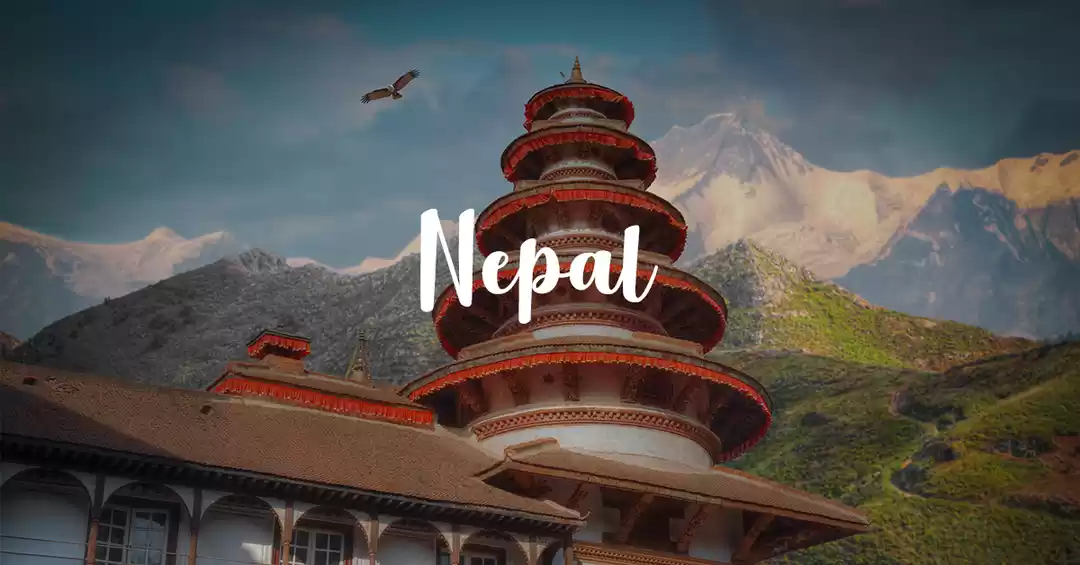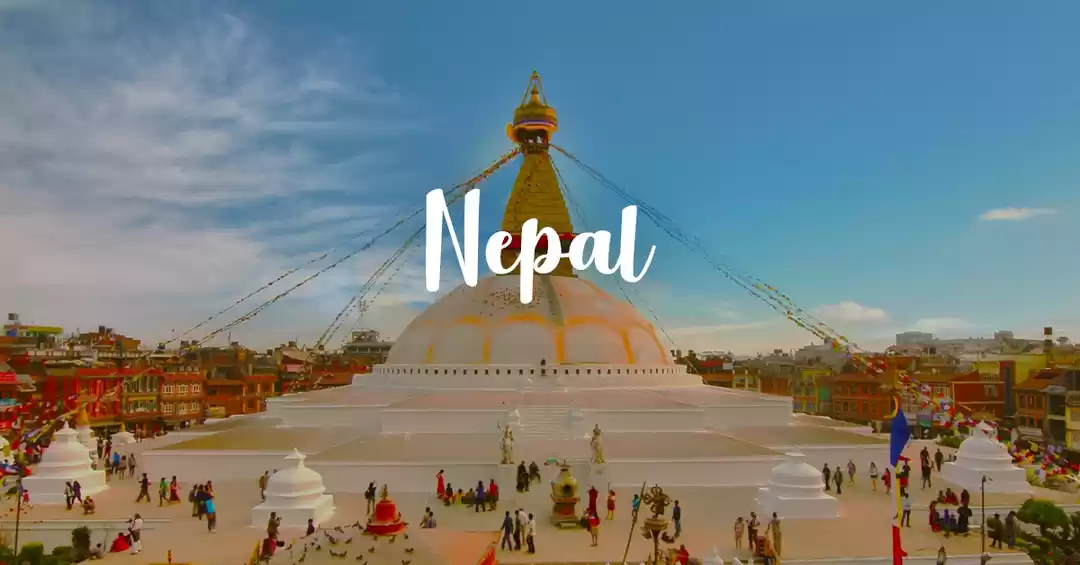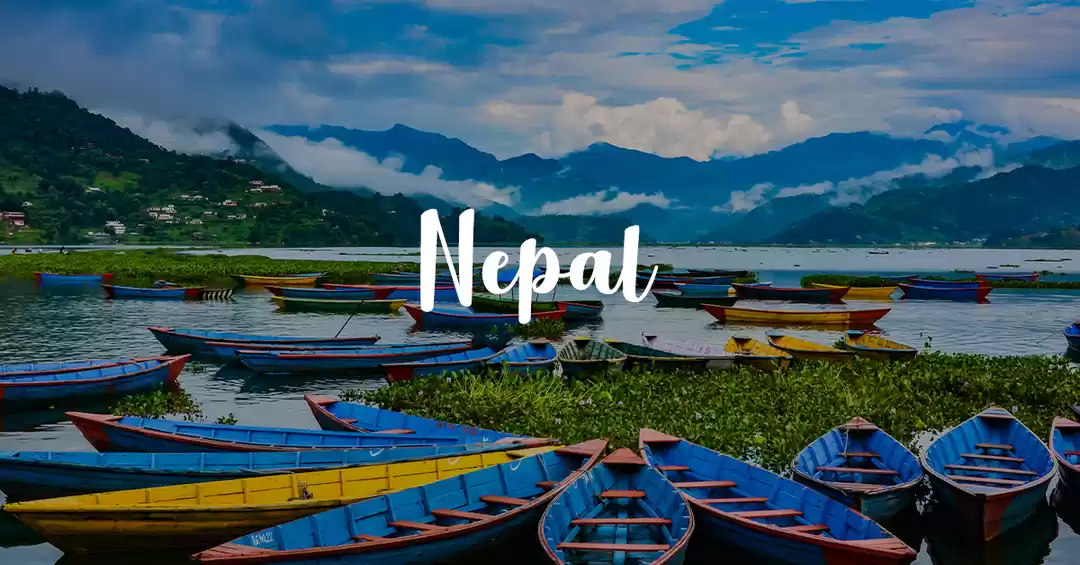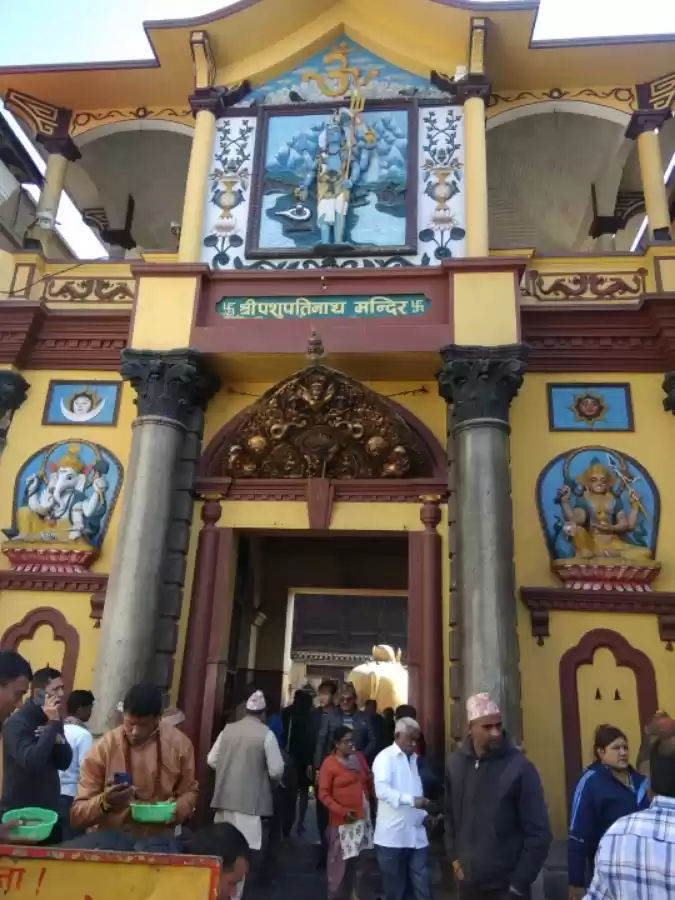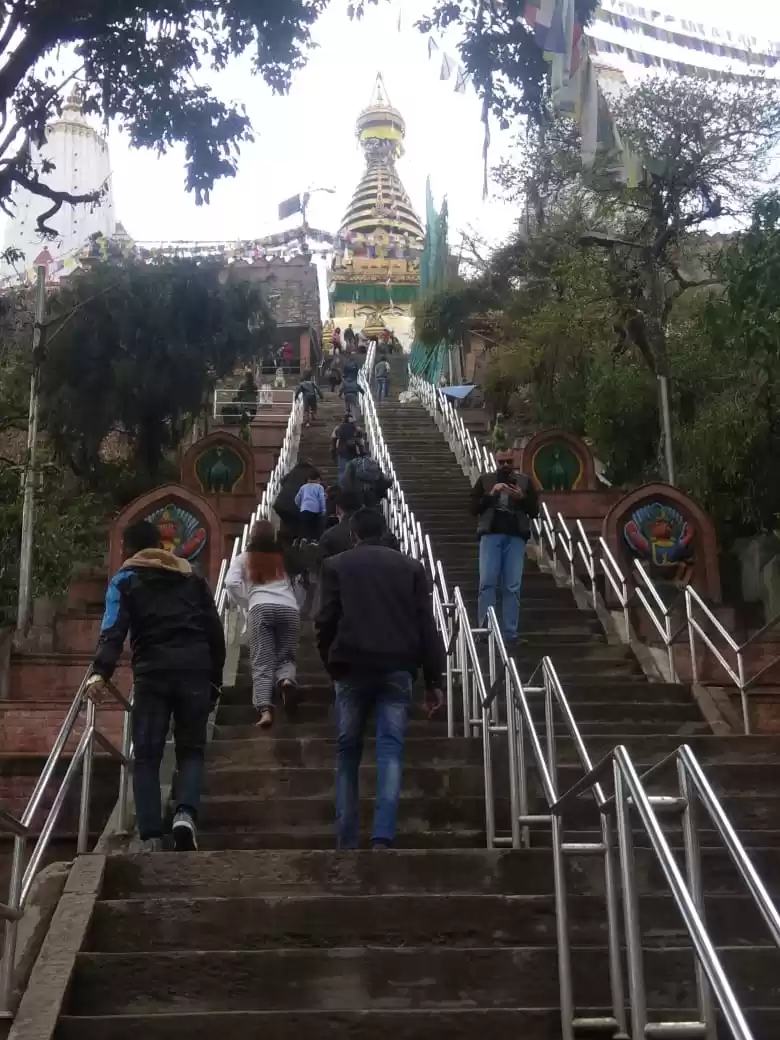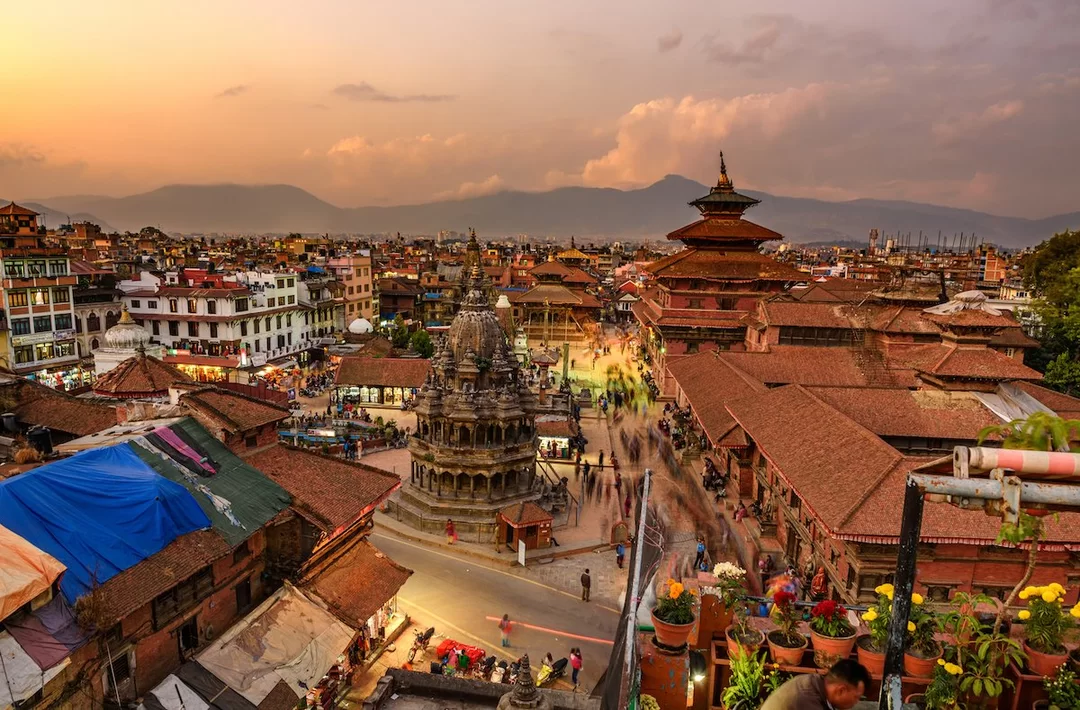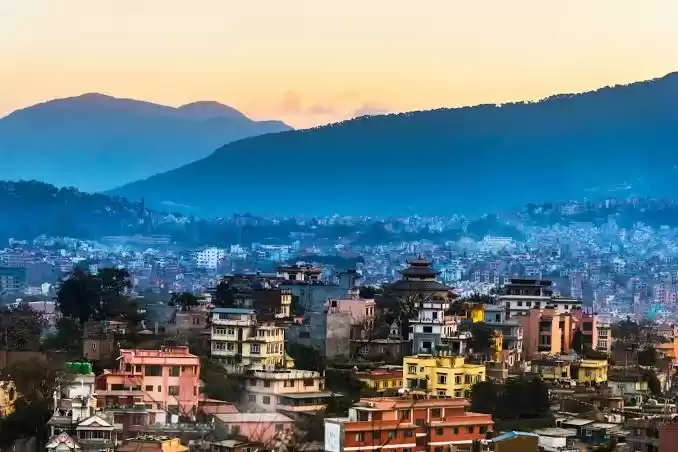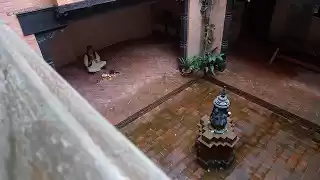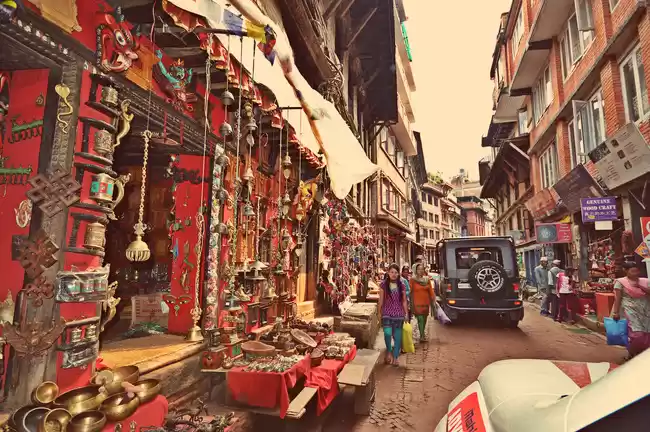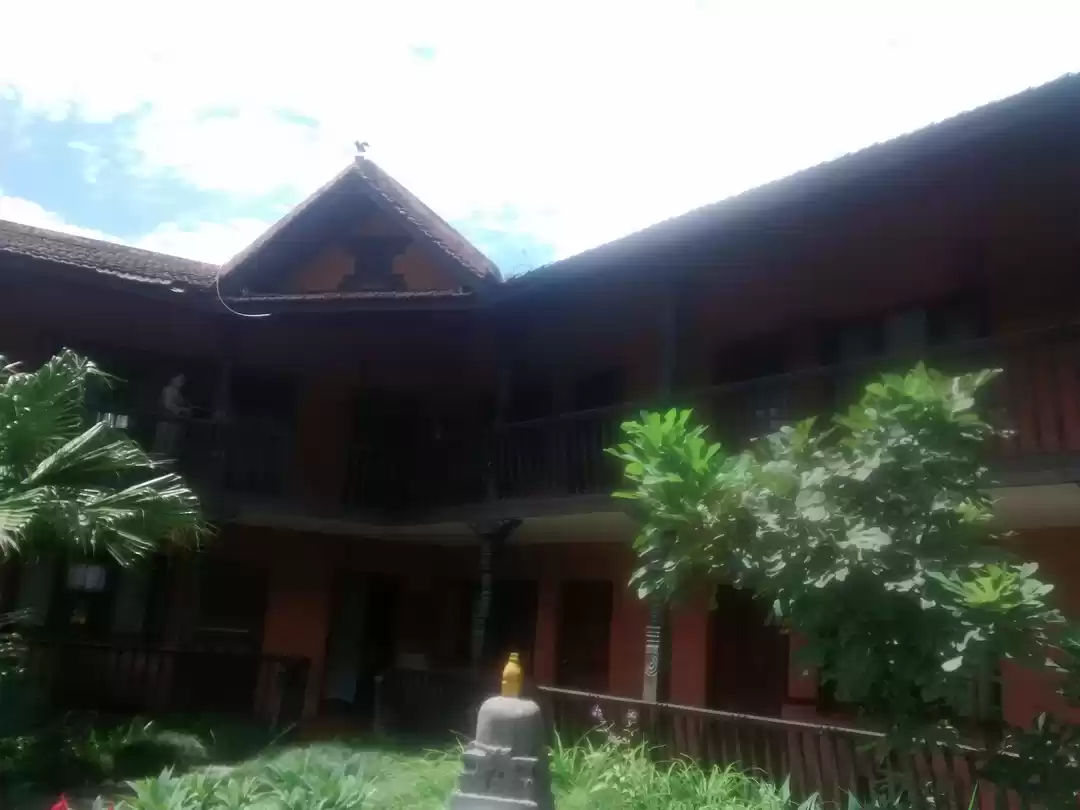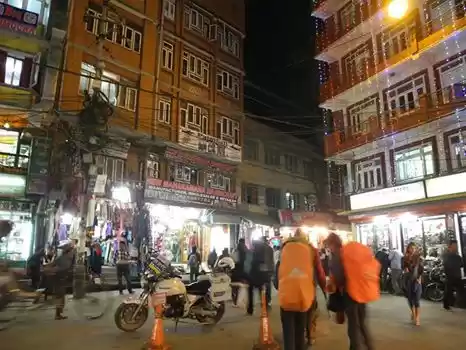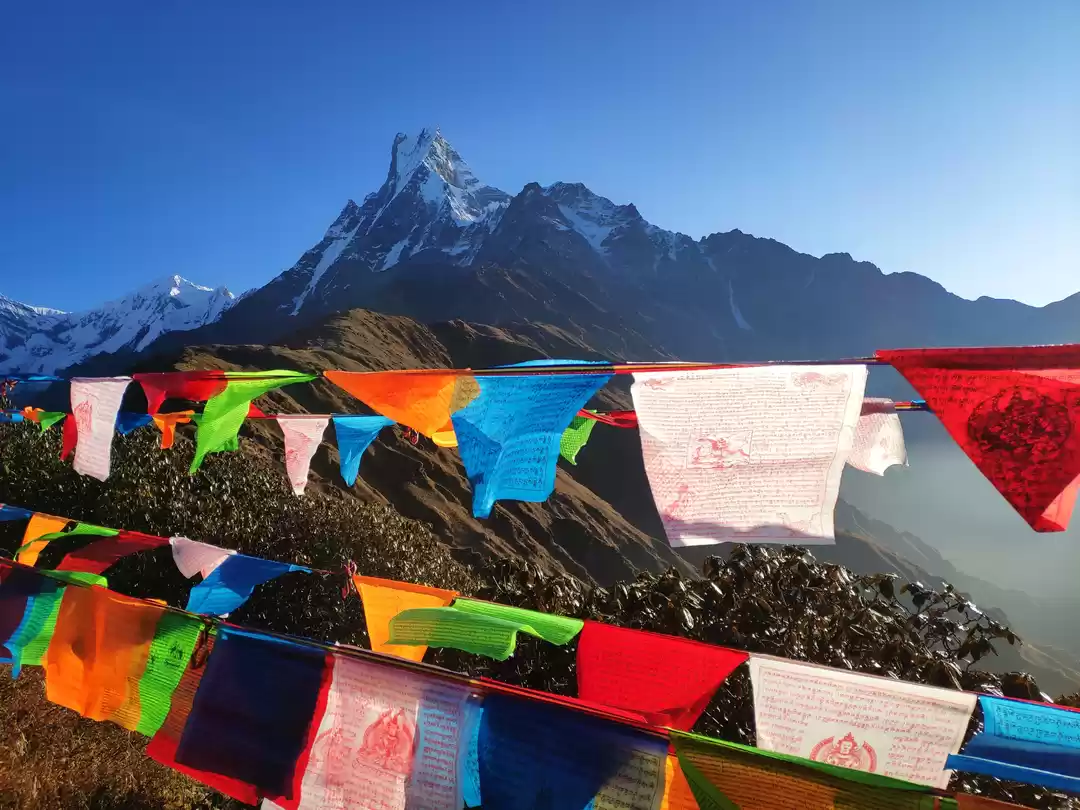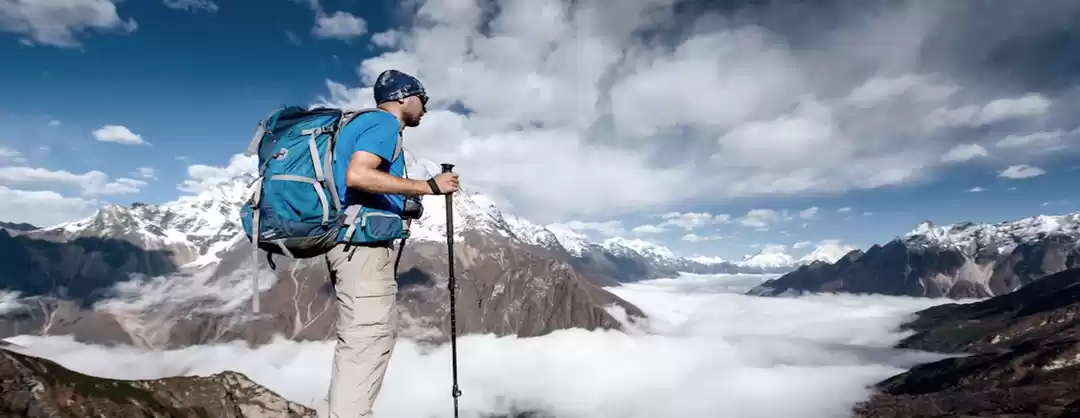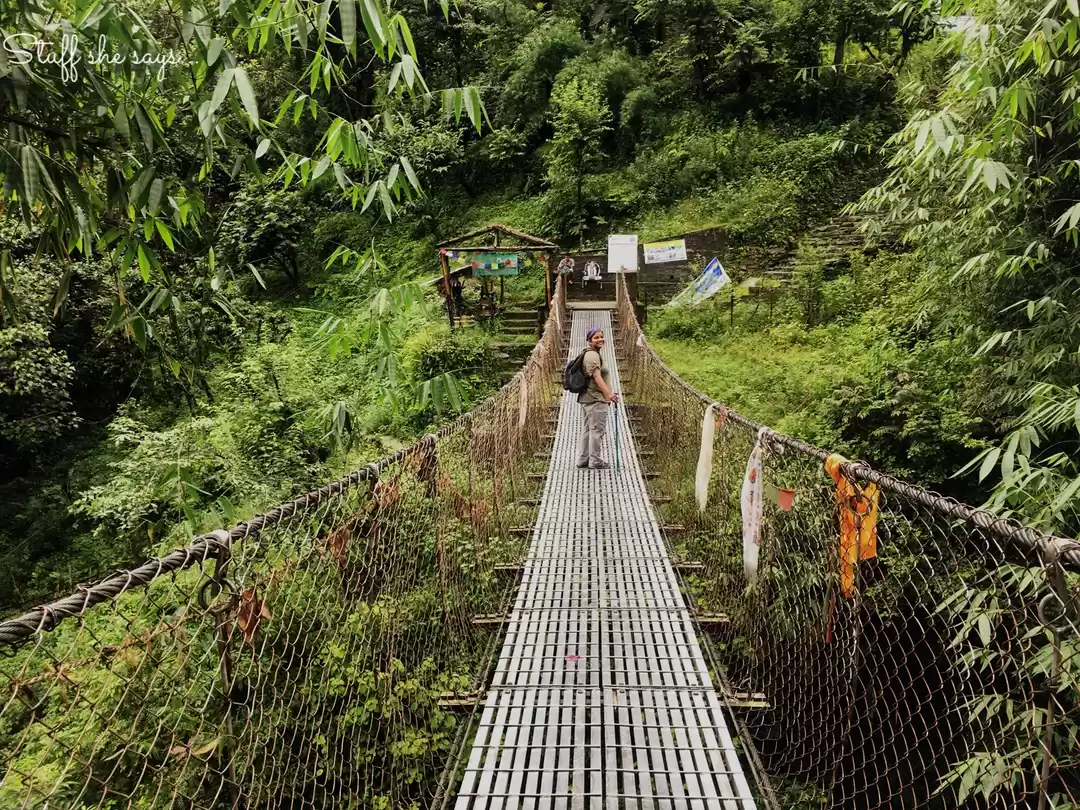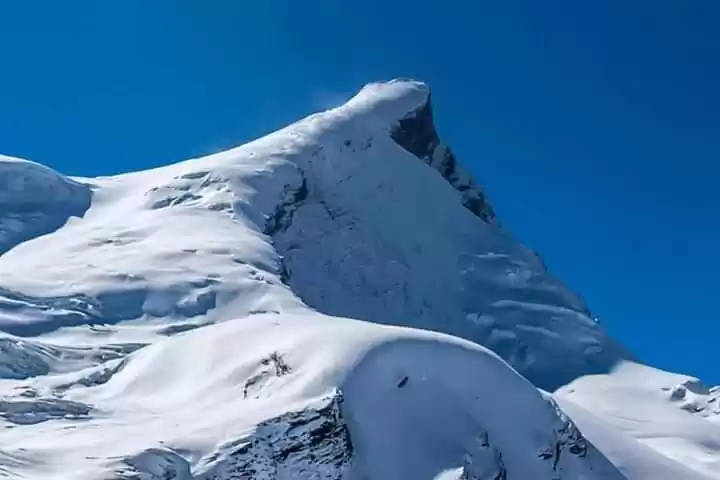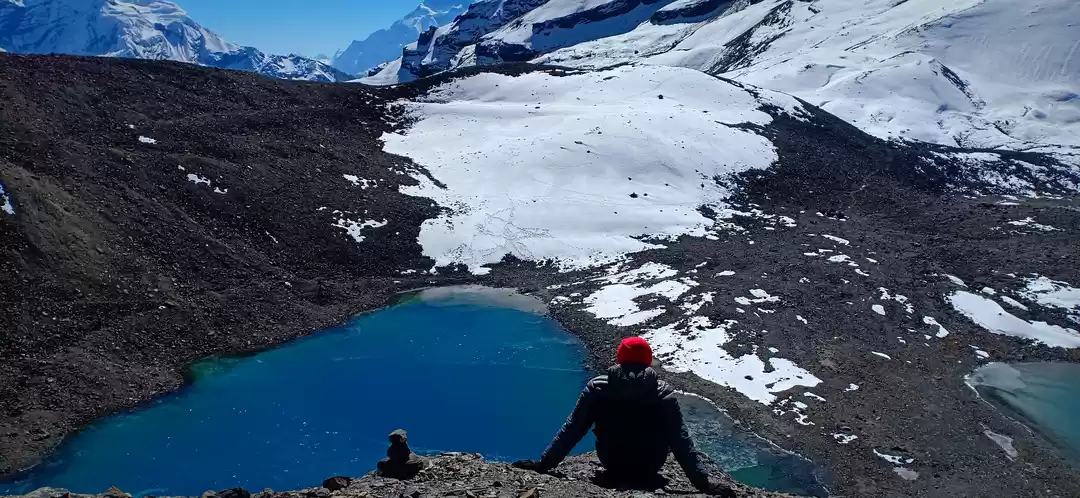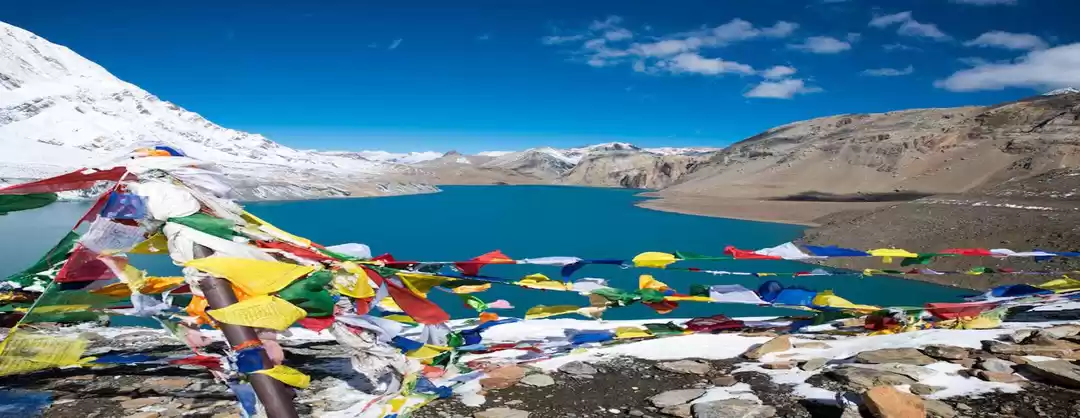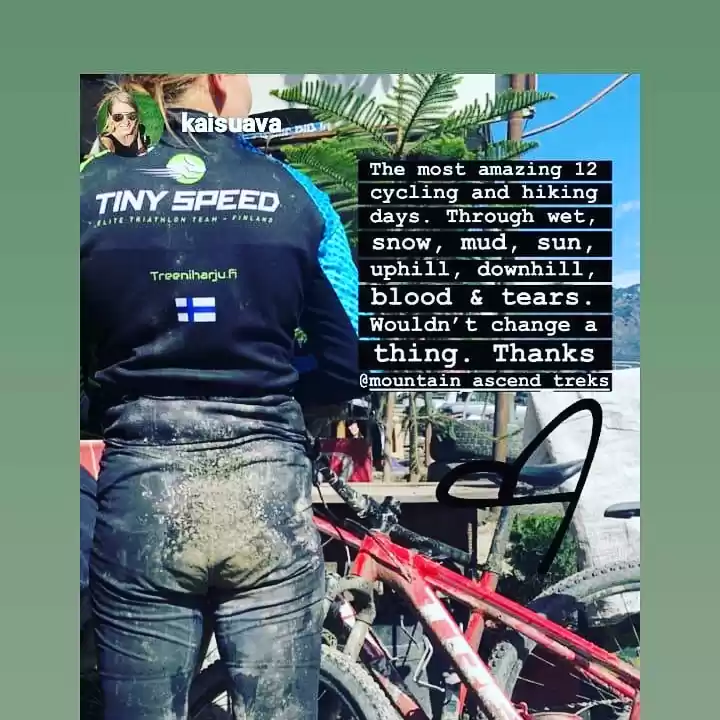Home to some of the world's highest and most well-known mountains, Nepal has attracted trekkers and mountaineers from all over the world for decades. Trekking is the main attraction for most tourists coming here and you feel it instantly upon arrival. Nepal just oozes adventure and trekking. Just take a stroll in downtown Kathmandu and you'll find trekking shops on every corner.
Travelling in Nepal is an awesome experience and trekking is a big part of it. Nepal is a stunning destination with its towering mountains of the Himalayas dominating the landscape and the hospitality of the Nepalese people making any visitor feel welcome. Also, the country has trekking resources in abundance from decades as the world's leading trekking destination, so you are in good hands. In addition, you'll be amazed by the level of comfort on some these treks (granted, it's no luxury experience but still). Teahouse accommodation and chefs that can cook meals you thought would be impossible at 5.000 meters really does make the whole experience easier. There's also the overall quality of trails, bridges and general trekking infrastructure that makes trekking in Nepal a truly great experience. For a great general guide to Nepal check out this travel guide.
Written by Bikudo Travel
Table of contents
Teahouse trek vs. camp trek Independent trekking vs. guided When to go Safety while trekking Altitude sickness and prevention. Prior experience and fitness A typical day in the mountains Money during your trek Tipping Buying/renting extra trekking gear locally Tips & tricks Connectivity while trekking Insurance Responsible trekking
Teahouse trek vs. camp trek
Trekking in Nepal can largely be done two different ways depending on your type of accommodation and the specific trek. Below we'll give you a brief introduction to what a teahouse trek is as well as a tent trek and what you can expect from them.
Teahouse trekking
One of the features that makes a Nepalese trek something special are the many teahouses dotted along popular trekking routes throughout the country. A teahouse is essentially a small lodge typically located in one of the many tiny villages scattered all over the mountain landscape. If you book a teahouse trek you sleep and eat in these teahouses each night. These lodges are a great place to rest by the fire, meet other travellers and just relax in comfortable surroundings.
Teahouses are basic accommodation and are very affordable. There are also treks that offer luxury accommodation, but generally don't expect much other than shelter and a bed and usually also a fireplace to stay warm. Most have shared bathrooms as well. The longer you venture off the beaten track the more primitive the teahouses become and some aren't very comfortable or well isolated meaning it gets cold at night.
Camp trekking
Tent trekking or camping is the alternative to teahouse trekking and is done through a trekking agency. It is more costly than a teahouse trek as you need extra Sherpas to carry the extra gear required, cooking equipment etc. However, camping treks allow you to reach remote regions and compared to some teahouses it's also more comfortable.
Camping treks are nowhere near as popular as teahouse trekking but that's also what makes a camping trek more appealing as it takes you places with fewer people. Just imagine setting up camp in the middle of nowhere in between the icy mountains. Zipping up your tent for the night and crawl down your sleeping bag is just magical.
If you are planning a summit trek like the Mera Peak it is only possible with camping gear and typically you will mix it up with teahouses in the villages and tents in the more remote places.
As for the comparison of the two types of treks it's up to the individual, budget and the duration of the trek. Either way is pretty awesome, but if you are looking for recommendations we've had the best experiences with a tent trek. It is just too cozy getting comfy inside your tent and have a hot cup of coffee or tea served to you "in bed" or a cup of noodle soup (so underrated!).
Another advantage on camp-treks is, that you bring your own kitchen, chef and food. That means the risk of a "Nepalese Quickstep" is less, as you don't need all meals from the more crowded tea-houses. In fact the hygiene is of higher standard in the camp. A toilet tent with a hole in the ground is more hygienic (although admittedly doesn't sound very nice) compared to the common and usually very poorly cleaned toilets in the teahouses.
Independent trekking vs. guided
This can be answered relatively short. If you are an experienced backpacker and have done trekking before it's possible to plan everything on your own and head out independently. No doubt the freedom of doing that is unique, but you need to know what you are doing. You can see a step-by-step guide for planning you own trekking.
For anyone else we highly recommend planning your trek through an experienced tour operator and choose a guided trek. Then you just need to consider whether it should be a teahouse trek or tent trek. Some of our popular guided tours include:
Gokyo Ri Trek : A 12-day trek in the Everest region. A spectacular trek with some awesome views of Mount Everest and can be done both as a teahouse and tent trek. Mardi Himal Trek: 9 days trek in the Annapurna region. This is a teahouse trek but will take you to some lesser visited places and small villages. Nar Phu Valley Trek: A 12-day adventure which takes you close to the Tibetan border. This trek is also called the hidden valley as not that many visitors go on this hike.
These are all a bit longer treks, but there are also many shorter treks such as a 3-day trek just outside Kathmandu and a 3-day in the Annapurna region.
When to go
Nepal have some high variations in climate changes due to its latitude and the dramatic changes in landscape. Coming to Nepal for trekking you usually get the best conditions in fall and spring time which generally delivers clear skies providing some amazing views of the mountains. The best views are in the fall where the sky normally is extremely blue and clear. In the spring, the air is usually more humid and can be misty - on the other hand you are blessed with the blossom of the rhododendrons.
October - November: Peak season
This is when most trekkers come to Nepal to conquer the mountains. The temperatures are mild with stable weather, at least as stable as it gets when trekking in the mountains. Be aware that bad weather can hit unexpectedly and quick any day of the year but fall represent the most stable months. Except for high altitude trekking, the temperatures are pleasant for trekking - not too cold and not too hot. Going much higher than 4.500 - 5.000 meters and you're entering icy territory.
December - January: Shoulder season
Traveling this time of year can be both rewarding and challenging. There are less travellers and prices are much cheaper, but it also comes with some challenges. Temperatures can be freezing cold and winter storms might hit without prior warning. Certain treks are not possible due to heavy snowfall so you have a limited selection this time of year.
February - April: Peak season
Not as popular as the fall season, but still a great time to trek. Temperatures are at the same level as in the fall season but this time of year you'll experience higher water levels in the rivers as vast amounts of snow are melting from the mountains. Also, the beautiful pink rhododendron trees are blossoming on the hillside this time of year. The views of the mountains might not be as good and clear as in fall due to haze.
May - September: Monsoon season
Generally speaking trekking during this time of year is a no-go. Heavy rain cause landslides throughout the mountain range which makes for dangerous trekking. The weather is hot and humid and the mountains are covered in clouds making trekking this time of year a bad experience.
Safety while trekking
Trekking in the mountains should be taken seriously as it is not without risk. That said, if you take your precautions and travel with a well-established company (that takes safety seriously) chances of something happening are slim. The company of choice is important for your overall experience (given that you don't trek on your own) as there are big differences to the many company's approach to safety and planning. Here's how:
Safety measures include bringing proper gear, enough Sherpas and guides, a satellite phone that works (on the high altitude and remote treks), flares, first aid etc. etc. Some companies might try and save costs and underbid competition by not buying a new expensive satellite phone, using gear and safety equipment that is worn down or not hiring an extra Sherpa. Planning is also essential. Some companies tend to skip an acclimatisation day to shorten the trip by a day or two and that way be able to offer a cheaper tour. This is probably our biggest advice - go for the longer tour option if any! It would just be so damn unfortunate to miss half the trip because you get hit by altitude sickness because the trip itinerary has been rushed. It happens and is probably one of the biggest reasons for failure.In other words - don't choose the cheapest solution you can find. Imagine throwing half the trip away due to a rushed itinerary just to save 100 USD.
Altitude sickness is a serious condition in the mountains and in extreme cases can be fatal. That only happens though, if you are careless and keep ignoring your symptoms which include:
Most guides are very aware of trekkers showing symptoms and will keep a keen eye on anyone in the danger zone. If you experience any of the above mentioned symptoms consult with your guide. Sometimes, all it takes is half a liter of water and a rest. To prevent altitude sickness, you need to walk slow and drink plenty of fluid. Most cases happen for those who walk too fast or dehydration.
Read our detailed article on altitude sickness.
Furthermore, Nepal is home to a large fleet of rescue helicopters relative to other trekking destinations. Should you get severe altitude sickness or break a leg for instance you are quite certain a helicopter will come and get you, provided your guide have a proper satellite phone and you have proper insurance cover (otherwise it'll cost you dearly).
A real-life story about the helicopters of Nepal: After a succesful trek to the summit of Mera Peak, our group got stranded in Lukla together with hundreds of other trekkers. Clouds hindered the small airplanes to land at the tiny airstrip so we had to walk down the mountain one hour or so to a small village with wide open areas for helicopters to land. It was like a scene out of a movie with choppers landing every 10 minutes to evacuate people back to Kathmandu.
To sum up, it can be dangerous and depending on the trek you are on, you are probably also going to experience a bit of anxiety at times, but if you take it seriously and think about the above-mentioned safety and planning issues chances of something happening are slim. Rule of thumb is to slow down and take it easy - you don't want to rush anything in the mountains.
Prior experience and fitness
Unless you are doing something extreme you don't need any prior experience. Your fitness level does not have to be that of an athlete by far, but a basic good fitness level is advised. That said, more often than not, it's your mental fitness that takes you pass the finish line on the tougher treks.
One summer we had a marathon runner on a trek in Indian Himalayas to Stok Kangri. He was the first to get hit by altitude sickness and had to turn around. All while a 70 something year old and his teenage kid were the closest to the summit. Granted, he was a tough cookie with several high mountains behind him, but still.
There are no rules and if you've got the will power chances are you can do it regardless of age and fitness level.
A typical day in the mountains
Two days are rarely the same, but I'll give you a glimpse into what a typical day consist of on a camping trek.
You start your day being woken by your guides and sherpas with tea and coffee served to you in bed. Only, your bed is a roll out madras in a tent and your view through your tent opening is usually a good one with snowcapped mountains in the background. Almost every morning starts like this. When you've finished your tea/coffee you scramble around in your tent to find your socks, pants and jacket and awkwardly crawl out to find your shoes and head for the kitchen tent where a delicious breakfast is served.After breakfast you pack your day bag with an extra layer of clothes, plenty of water and a few snacks. We typically start walking around 8-9 o'clock while our local guides take care of the camp. By midday our guides will set up a kitchen tent and start to prepare lunch. Sometimes it is just a packed lunch which we enjoy somewhere in the countryside.After lunch it is typically 2-4 hours of trekking before we reach our camp. Some of the sherpas will usually walk faster to reach the camp in time to have your tents ready for you when you arrive. At the campsite we just relax, enjoy the sun, play cards or sleep. There's usually a bowl of soup, snack of (if you're lucky) instant noodle soup when you reach the camp. A few times when it was freezing or just bad weather, we would crawl up in our sleeping bags in our tents and have a bowl of soup served which could lift the mood of even the most battered trekker! In the evening it's time for dinner. Almost guaranteed, at least once during your trek, you will be amazed by the cooking skills of your guides! After a long day dinner quickly becomes a highlight of the trip and depending on the trek and your guides, the food is amazing.
In general terms, this is pretty much what happens from you wake up till you go to sleep. What makes trekking in the Himalayas so special are the experiences during the day, though. The change in scenery as you climb higher up the mountains. The views, the comradery, the villages you pass through and the children running after you, the fresh mountain air, the exhaustion and muscle fatigue in your legs. The moment you turn around to witness the distance you've covered or when you pass a mountain pass and the distance in front of you is laid bared. The feelings go high and wide and the sense of pride and "we did it" at the end is worth it all. It is something special indeed!
Money during your trek
Make sure to bring money on your trek. Consult your guide on how much to expect on a day. For some treks you don't spend anything as you have your own chef and all meals are included. Other treks it's not included, and you can buy meals in the local villages. However, bring some for the different shops you'll pass in the villages. Although a Snickers might cost you 10 bucks, it might be worth it when you are running low on energy and you didn't pack enough energy bars. Also, you'd like to have enough money for tips at the end of the trip.
Tipping
Tipping is difficult and more often than not a hassle so here's my experience with tipping on these expeditions.
There's usually a hierarchy with the guides and Sherpas and you are normally informed about this after your trip. To avoid any uncomfortable situations where you tip one guide too much and another too less, your guide will collect tips upon completion of the trip and distribute to the others. If you've had a bad experience with one of the guides, talk to your tour leader/main guide about it and he'll be able to advice you what to do or not do. Likewise, if you've had a great experience and would like to tip someone in person, ask the tour leader if and how you should do it.
Tipping is done on a per day basis and usually collected at the end of the trip.
On an Everest Base Camp Trek our group had excessive clothes, snacks and even medicine. Instead of throwing it out at the end of the trek, we arranged to let the guide share all the material in a responsible way, especially on the medicine side. That was on top of the tipping, and was a great joy for the local Sherpas and helpers to receive our left overs.
Buying/renting extra trekking gear
If you need to buy extra gear for your trek you are well covered in Kathmandu! You can get almost everything here and in all sorts of quality. Usually you will meet up with your guide a day or two before the trek starts to go through gear and check if anyone needs to rent additional equipment. Usually that involves walking sticks and if you are going for a summit then crampons (spike you strap on your trekking shoes for icy/snowy conditions) and proper isolated boots.
Even if you are in need of all equipment you can get most in Kathmandu. Even on our Mera Peak trek, two decided to join our group while on a six month backpacking trip through Asia and didn't have anything needed for a summit trek but managed to get everything they needed to complete the trek.
Consult your guide on which shops and how much to bargain for the equipment. All rental equipment is usually handled by your guide. All the shops are in downtown Thamel where most travellers/backpackers stay.
Tips & tricks
Here's a list of some general good advice that helped me on my trek.
Energy bars: Make sure to bring plenty and also powder to dissolve in your water bottles. I kid you not - a liter of energy drink got me the final 50 meters to the summit. I was done! Music: This was a lifesaver at times. I brought an old Ipod shuffle that hold some 200 songs on it. It's old school, but your 5G and Spotify is doing you no good out there. Think that electricity and connectivity is a limited source. Power banks: Bring some that can really hold power. Batteries: If you have anything that runs on batteries, bring extra. I bought an extra battery for my camera and I was really struggling at the end. Keep your batteries warm! Electricity: You should be able to charge in every village you stay in, but expect them to charge as well and the output isn't great (it takes a long time to charge) Plastic bags: Bring plenty of small plastic bags for your wet socks or whatever you might use them too. They might come in handy. Spices: we brought extra chilli and garlic. It might sound crazy, but it served two purposes: Add flavour and good against altitude sickness. The last might not be scientifically true, but we've brought nonetheless on all our expeditions and haven't experienced altitude sickness yet. Pack fast drying towels Walking sticks: I found it silly but was really great! Kathmandu: Don't underestimate what you can buy in Kathmandu. Talk to the guides and they'll show the right shops to get whatever you might've missed. Socks: bring plenty. Cold feet are a killer. Tiger balm and sports bandage: I sprained my ankle on the first day and this helped along with some sports bandage.Don't forget to read our packing list for more great tips on what to bring.
Connectivity while trekking
Wifi and phone signals are not great and don't expect to stay connected with the world around you on the entire trip. Connectivity is improving though and if you want, you might purchase a local sim card in Kathmandu from either Nepal Telecom or Ncell.
Wifi is offered in the larger villages (usually) but don't expect a stable connection.
Insurance
Make sure that your insurance supplier covers high altitude trekking. Not all does and some have an altitude limit to their insurance. Make sure to ask your insurer about their limitations with regards to high altitude mountaineering. World Nomads covers globally and up to 6000 meters. Check out their policy here. If you don't have proper cover you are likely to be excluded from a trip with no refund.
Responsible trekking
Experiencing the raw nature and the ever so charming mountain villages is a great experience and we should all do our part to keep it that way. Luckily most people are great at not littering but it happens and it's unacceptable. Don't leave anything behind and respect the locals in the villages. Always ask permission before taking a photo.
If you ever go to local temples walk to the left and if you spin a prayer wheel do it clockwise.



